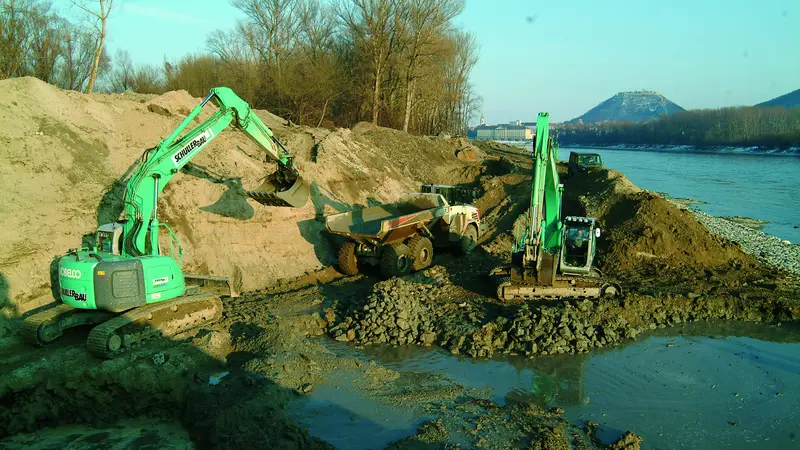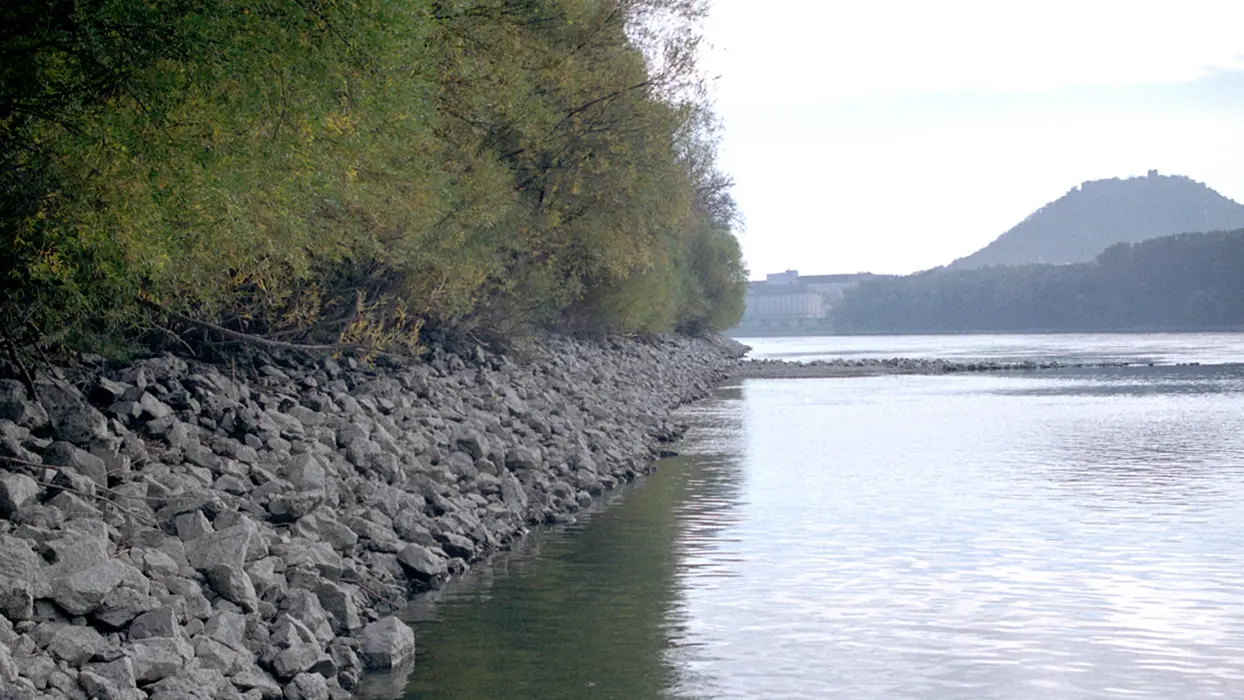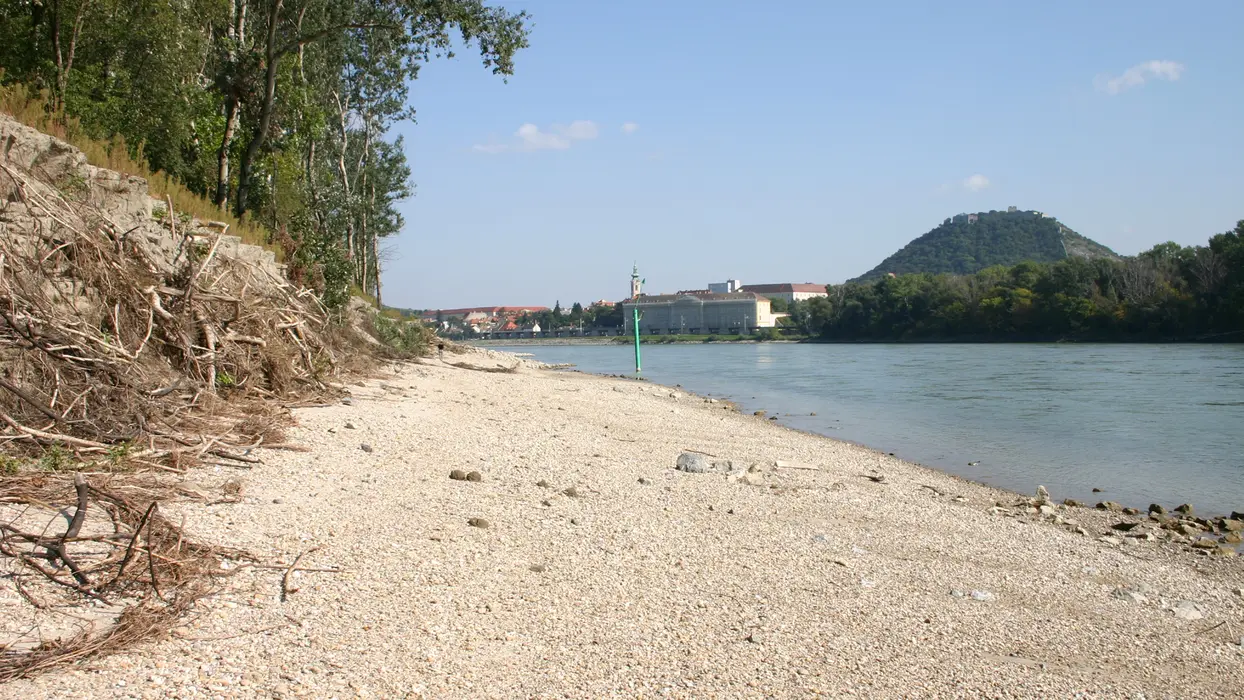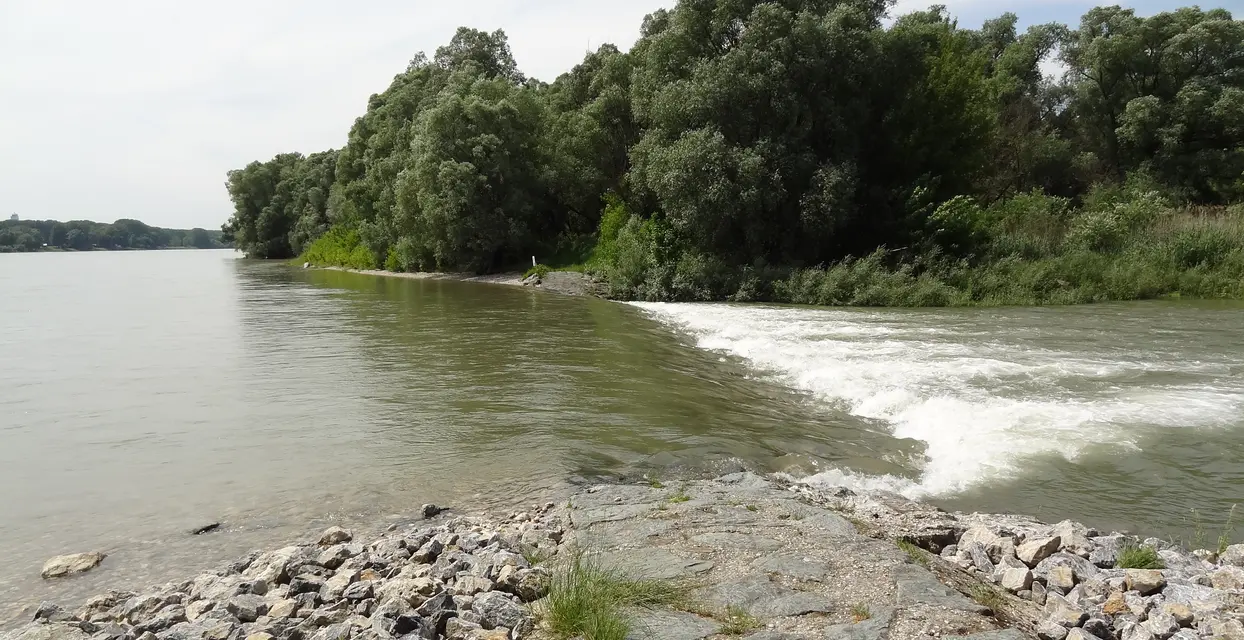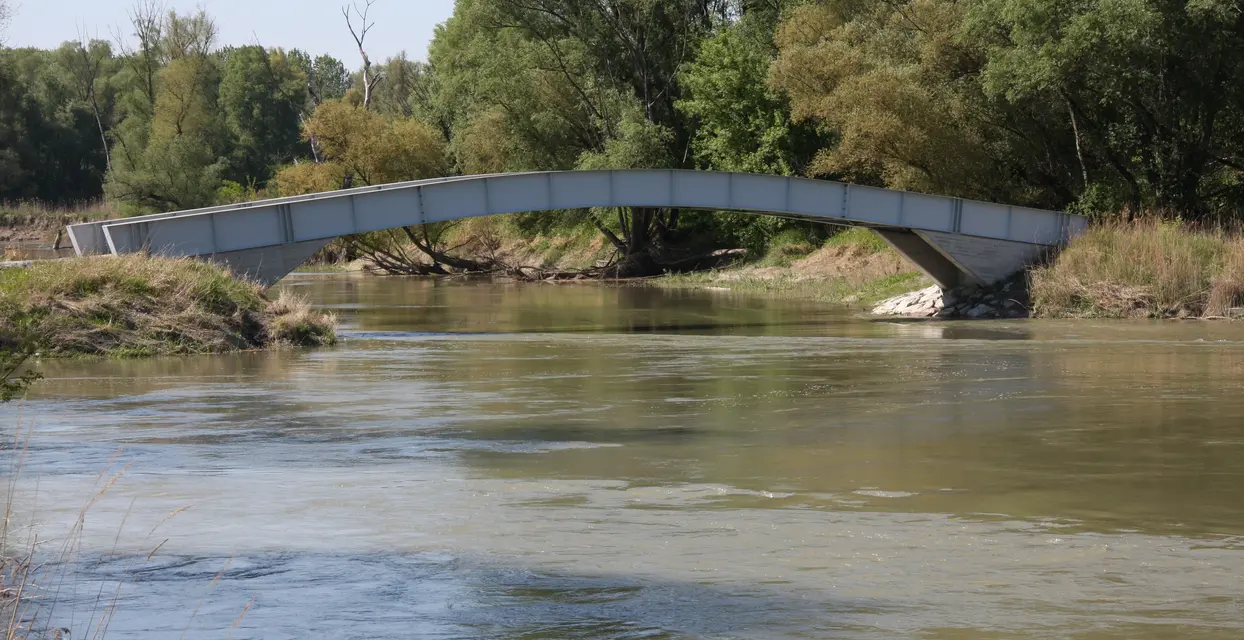Considerable progress had already been made between the years 1998 and 2006 in terms of ecological river engineering on the Danube east of Vienna. The focus was on the increased connection of ancillary branches to the main flow of the river which had been separated by armoured stone blocks during the course of the major project to regulate the river in the 19th century. The renaturation of riverbanks on the main Danube also began.
Riverbank restoration Thurnhaufen
Completion 2006; LIFE project in cooperation with the Donau-Auen National Park
A total of approximately 50,000 cubic meters of armoured stone blocks running for 2.85 kilometers between river kilometre 1885.75 and 1882.90 on the left bank of the Danube were removed. After some floods, naturally structured riverbanks were created. It was the first ever riverbank restoration project on a navigable river with the dimensions of the Danube. For this innovation in ecological water engineering, the project received an award from the European Commission for the best LIFE Nature project of 2007/2008.
You can find out more about this project on our blog.
Side-arm reconnection Schönau
Completion 2004; LIFE project in cooperation with the Donau-Auen National Park
In the course of the project between river kilometres 1910.1 and 1906.67, the ‘Äußere Kühwörther Wasser’ (an old side-arm / tributary of the Danube) was reconnected to the main flow of the river. It was possible to build on the experience of the earlier projects and connection was made by significantly lowering riverbank protection structures. Two large bridge-like passages were installed to reduce the frequency of log jams (blockages caused by driftwood).
Side-arm reconnection Orth
Completion 2002; LIFE project in cooperation with the Donau-Auen National Park.
Between river kilometres 1905.3 and 1901.9 the ’Große Binn’ and the ’Kleine Binn’ - tributaries were reconnected with the Danube. No concrete inlet structures were necessary. Just one small concrete structure was constructed to open an old traverse.
Side-arm reconnection Haslau-Regelsbrunn
Completion 1998
The 10-kilometer-long Haslau-Regelsbrunn side-arm system, which was separated from the main stream during the course of the major regulation of the Danube in the 19th century, is located between river kilometres 1905 and 1895.5 on the right bank of the river. The project to reconnect this system was the first major restoration project on the Austrian Danube and started in 1996 before the founding of the Donau-Auen National Park.
The average throughflow of the side-arm system was increased from an average of 20 to more than 200 days per year due to the installation of three concreted casement openings and four overflow sections - a milestone in ecological river engineering, especially on navigable rivers.
However, the consequences of erosion of the riverbed on the Danube to the east of Vienna are particularly evident in this project. As a result of falling water levels due to riverbed erosion, the period of connection is decreasing from year to year, so much so that after fifteen years the side-arm is only free-flowing for 140 days of the year. This makes it clear that stabilisation of water levels is an important prerequisite for sustainable renaturation measures.
